Configure 1:1 Personalization
Note
Make sure you have already run and completed the Personalization setup for your account before configuring personalization rules.
Create personalization rules
Personalization can be enabled at the Global level, Query level (site search), or Category level by creating personalization rules at AI Studio > Personalization studio.
-
Navigate to the tab of the level you want to create the rule for (Global rules, Site search rule, Category rules).

-
Click the + New rule button:

-
Select your catalog from the dropdown.
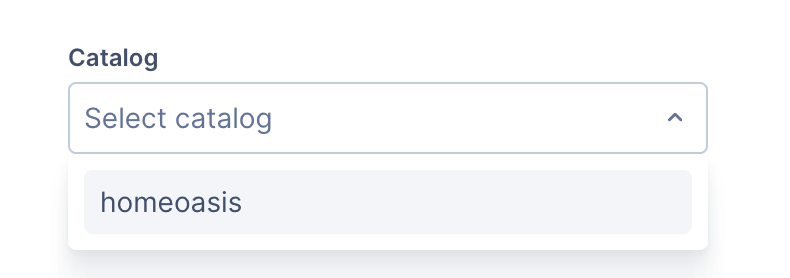
-
Use the Enable Personalization toggle to quickly turn personalization on/off for a rule. This can help you save a variant of the rule with Personalization disabled for A/B testing.
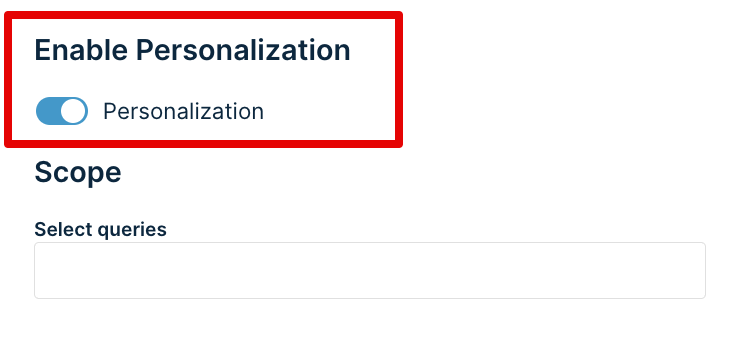
-
Here are the details of the further options for each type of rule:
-
You can create a Global rule to enable personalization for All queries / All categories or both at once.
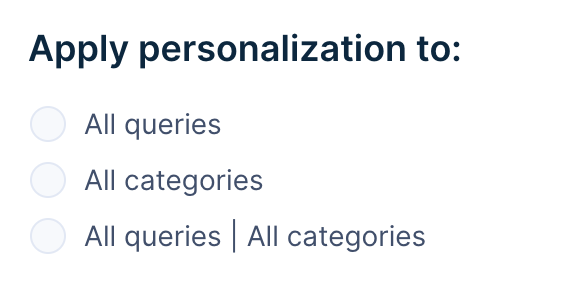
-
You can create multiple Site search rules to enable personalization for specific search queries. This means that the search results for these queries will follow personalized ranking.
Type and hit the return key after each search query in the Select queries field.

-
You can create multiple Category rules to enable personalization for specific categories. This means that the products displayed in these categories will follow personalized ranking.
Select the categories from the dropdown.

-
-
Preview and save your rule.

Preview and debug personalization
To better understand the impact and experience of personalization for visitors on your site, preview your rules before enabling them.
The Preview panel can be accessed by the button on the top right corner while creating or editing any personalization rule.
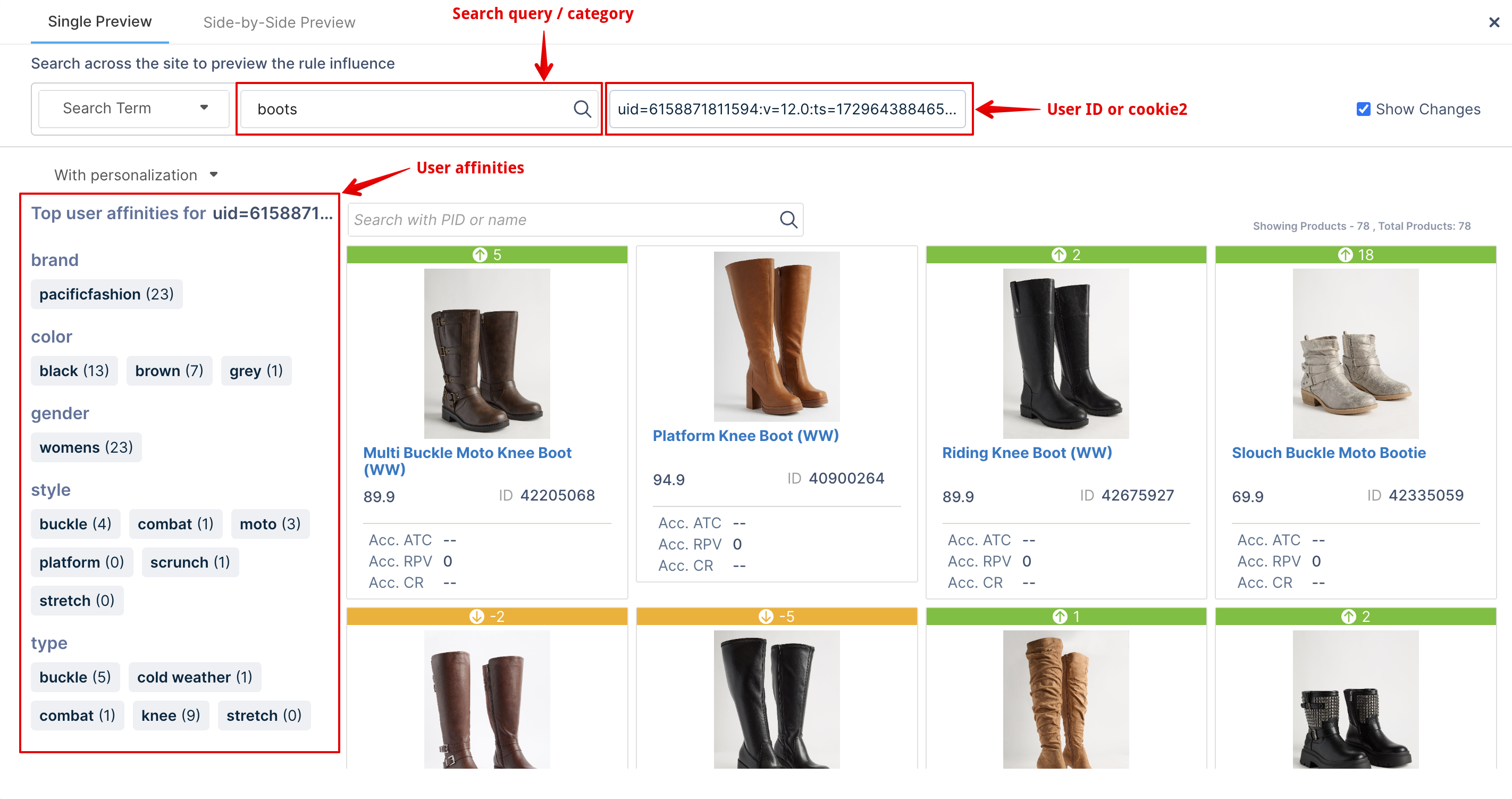
Attribute affinity model preview
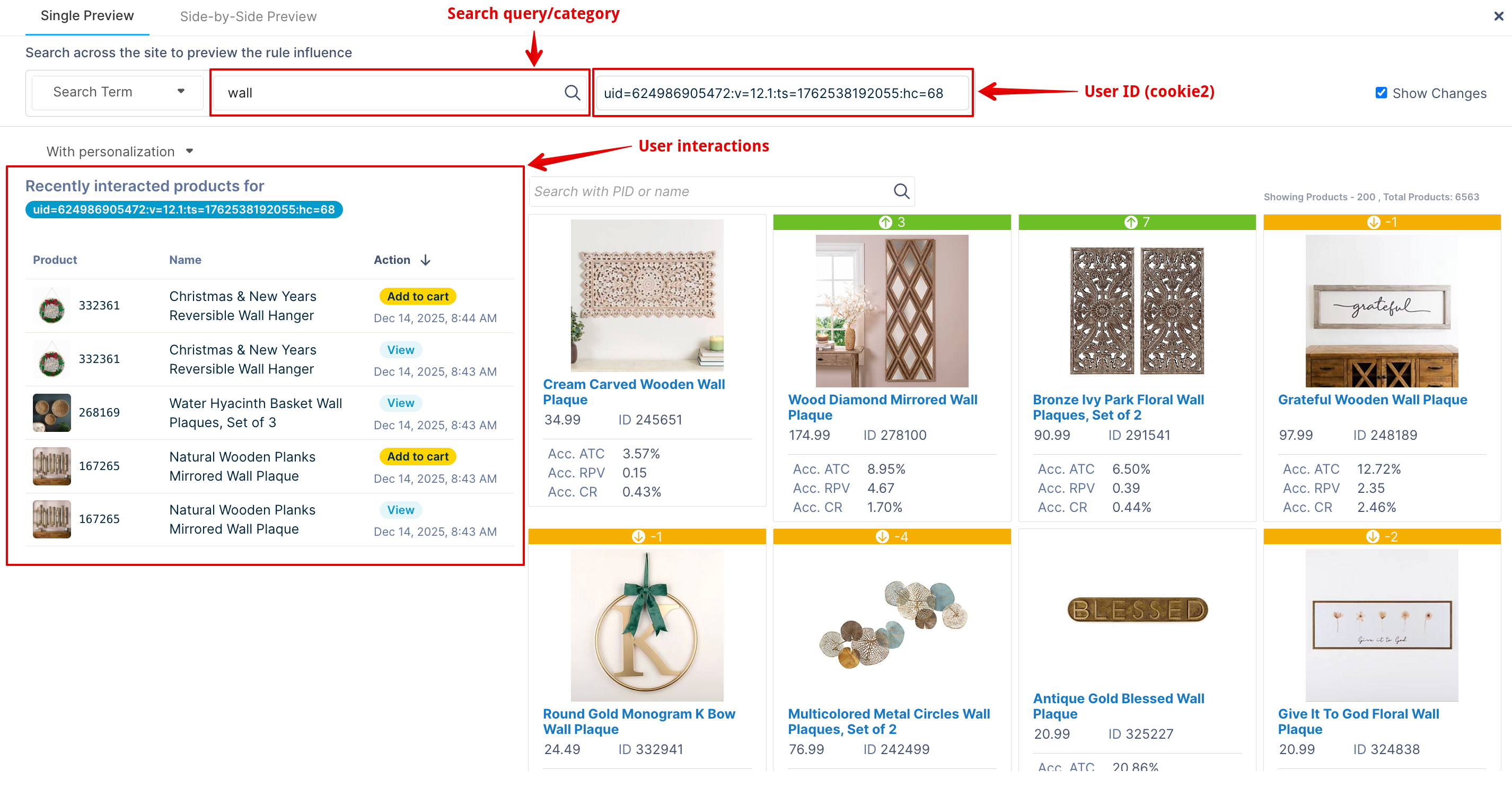
Behavioral sequence model preview
The following are some characteristics of the Behavioral sequence preview:
-
Interaction display limit: Displays up to 32 of the most recent user interactions.
-
Time window: Displays only interactions from the last 3 hours (inactive sessions are automatically excluded). You can adjust this time window by contacting your Customer Success Manager.
-
Product availability: When a product is no longer in your catalog after a recent update, the preview shows "Not in latest index" without the product thumbnail image.

Follow the steps below to use the preview panel:
-
Enter the search query / select category in the search box for which you want to test.
-
Enter the User ID or the cookie2 value of a site user in the field next to the search box (highlighted in the image above). For testing purposes, you can fetch this value using the Bloomreach Pixel validator Chrome extension.
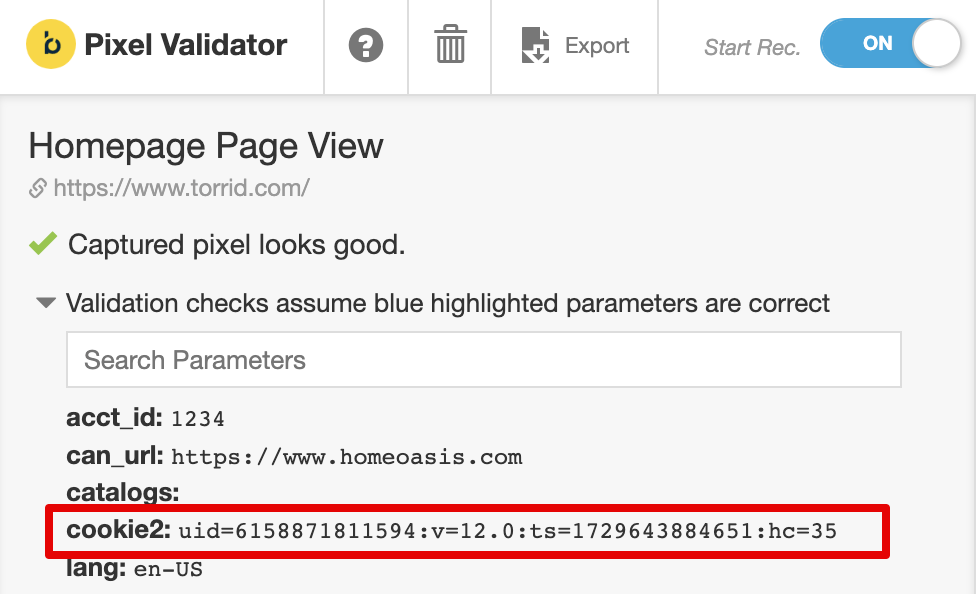
-
Review the search results in the Preview panel. On the left side, the top attribute affinities associated with the user that govern the personalized product ranking are displayed (and the number of interactions they made with the attribute).
-
You can view the exact impact on the product ranking in the following ways:
-
Toggle the Show Changes checkbox at the top right. This will highlight the changes in position of the adjusted products.

-
Switch to the Side-by-Side Preview tab to compare the search results with and without 1:1 Personalization applied.

-
Debug personalization
Ranking diagnostics is an important tool for debugging product ranking. It can be used to identify the overall impact of enabled personalization rules on different queries or categories.
-
Go to Search & Merchandising > Ranking diagnostics in your Bloomreach dashboard.
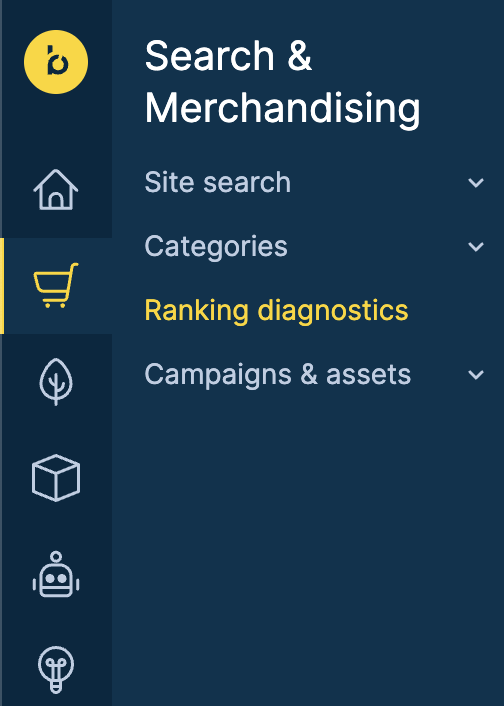
-
Click the pencil icon to set up an Additional scope definition.

-
Enter the User ID or cookie2 value of a site user under the User ID field. Click Update to apply the configuration.

-
Enter a search query (or category) for which personalization has been enabled in the search field and hit Enter.
-
This will show the search results for the specified user. The Personalization indicator (On or Off) and badge on top of the products can be used to validate 1:1 personalized ranking.
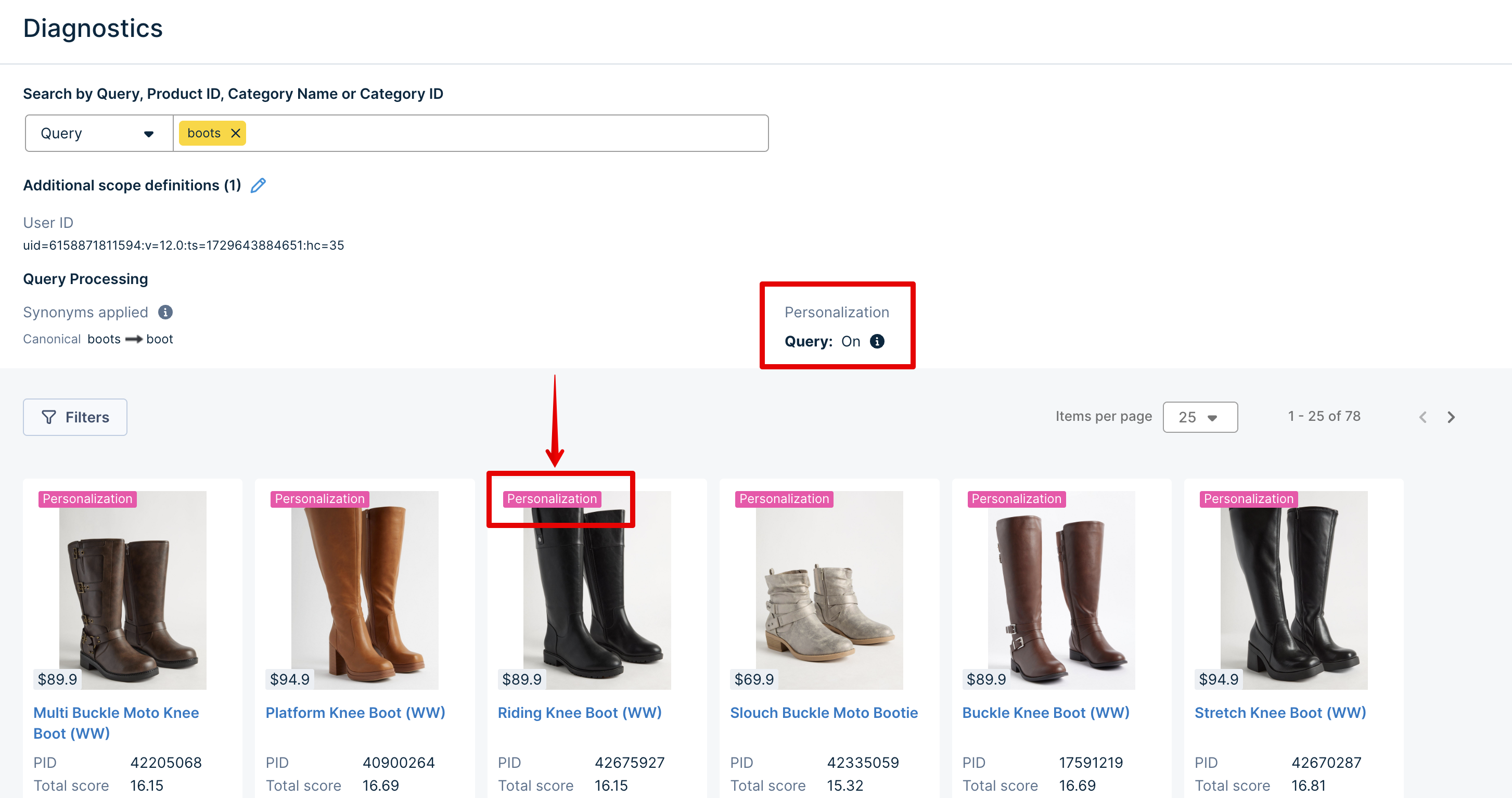
A/B test personalization rules
A/B tests can be created at any of the following site levels:
- Global - for all searches and categories
- Site search - for select queries or groups of queries
- Category - for select categories or group of categories
Note
For optimizing the benefit of Personalization, we recommend you to A/B test at the Global level (for all queries and categories).
To create an A/B test for a Personalization rule:
-
Find the rule you want to A/B test from the list of Personalization rules and review its rule variants -

The Variants field shows the number of variants available for a rule. Click on it to view all the Rule variants.
-
If you already have a suitable variant to test against, skip this step. If not, save a new test variant of your rule with/without Personalization enabled - While editing or creating a Personalization rule, click on the arrow next to Save, and select Save new test variant from the dropdown.
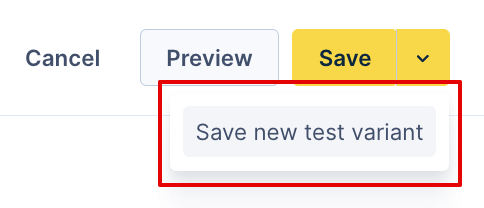
-
In the Rule variants window, “The default behavior” (or v0) for a rule depends on how Personalization is configured globally. For example, if Personalization is enabled at the global level (for all site searches / all categories / both), then the v0 for any local rule of that type (Site search or Category) will also have Personalization ON. The Control label next to a variant depicts your custom Personalization rule (the control group).

-
Select variants and set up test - From the list of Rule variants, include the variants that you want to include in your A/B test and click on Set up new test. There can be two scenarios for selecting variants:
- Test a custom variant with the default v0: In this case, be mindful that the v0 is affected by the global Personalization configuration. Updating the global rule will change the behavior of the v0.
- Test two custom variants together: You can create two different variants, v1, and v2, with Personalization ON and OFF, respectively. Use these variants and split the traffic between them. Note that since this case doesn't include v0, the test will not be affected by changes in the global configuration.
-
The window to run an A/B test will open, where you can set up your test buckets and allocate traffic. Refer to the How do I run an A/B test? guide for a step-by-step overview of setting up and running the A/B test.
The stats and details for the A/B test are then available in the Testing tab in your Bloomreach dashboard.
Note
To avoid accidentally enabling Personalization on a query/category while testing it, you can toggle Personalization OFF in the rule, and create a new test variant with Personalization ON to run the A/B tests with.
How A/B testing 1:1 Personalization helps
A/B testing lets you monitor and evaluate the effectiveness of your 1:1 Personalization rules. You can deliver personalized search results to a portion of your traffic, compare them with the default behavior, and analyze their performance before enabling them widely.
The A/B test results can help you evaluate:
- The Personalization configurations and rules that lift key performance metrics like Revenue Per Visitor or Repeat visitors for you.
- The ideal duration for the Personalization to show an effective lift.
- The common/strong user affinities on your site, based on user preferences.
- The performance of 1:1 Personalization, together with different merchandising rules.
Note
We recommend you to run A/B tests for at least a duration of 30 days to see significant results.
Updated 20 days ago
